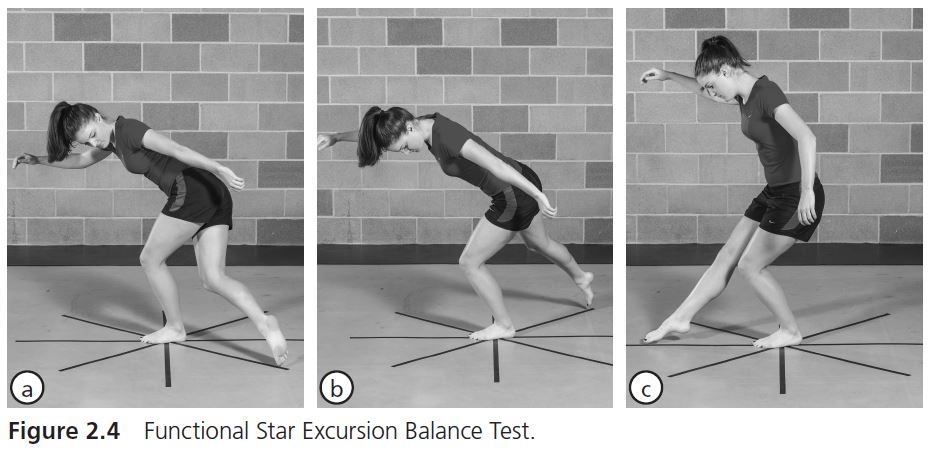Functional Core Assessment
by Developing the Core
Kinetic Select
October 2019
This excerpt from Developing the Core discusses two testing methods that may predict a strong or weak core based on how well the participant completes the task.
The following is an exclusive excerpt from the book Developing the Core, published by Human Kinetics. All text and images provided by Human Kinetics.
A number of functional core assessment tests can be used to assess the core. Keep in mind these tests do not directly assess the core but speculate a strong or weak core based on how well the participant completes the task.
The first is the Star Excursion Balance Test (SEBT), which requires the layout of two sets of lines on a floor (Bliss and Teeple 2005). The first set of lines run perpendicular to each other. The second set of lines run at 45-degree angles to the first set. Participants stand on the dominant leg where both sets of lines intersect and reach out in each direction with the nondominant leg as far as possible without touching the floor (Gribble and Hertel 2003). The farthest distance reached with the toe in each direction is recorded (figure 2.4). This type of assessment is typically completed to determine the effectiveness of a training protocol, rehabilitation, or implement (e.g., ankle brace). However, Plisky et al. (2006) used the SEBT to predict injury in high school basketball players during the competitive season. Athletes who displayed a four-centimeter right–left anterior reach difference were more likely to suffer a lower extremity injury. According to the data, they also believe the SEBT is redundant and should be limited to three reach positions: posterolateral, anterior, and posteromedial.

A second functional core test is the single-leg squat test (Kibler, Press, and Sciascia 2006; Willson, Ireland, and Davis 2006). Here subjects are required to perform repeated partial squats to 45 degrees or 60 degrees of knee flexion. The movement of the person is analyzed, particularly knee position (valgus or knock-kneed and varus or bowlegged), using motion analysis. The knee should track the foot. Any deviation suggests a problem with muscle activation and force transfer through the core, possibly leading to future injury. Subjective analysis can be completed if motion analysis equipment is not available.
The NSCA, the world’s leading sport conditioning organization, offers its unrivaled expertise for any athlete seeking to strengthen the core and improve athletic performance. Featuring 11 ready-to-use sport-specific programs, Developing the Core provides more than 50 of the most effective exercises along with science-based assessments to help athletes understand their individual needs. The book is available in bookstores everywhere, as well as online at the NSCA Store.
- Privacy Policy
- Your Privacy Choices
- Terms of Use
- Retraction and Correction Policy
- © 2025 National Strength and Conditioning Association